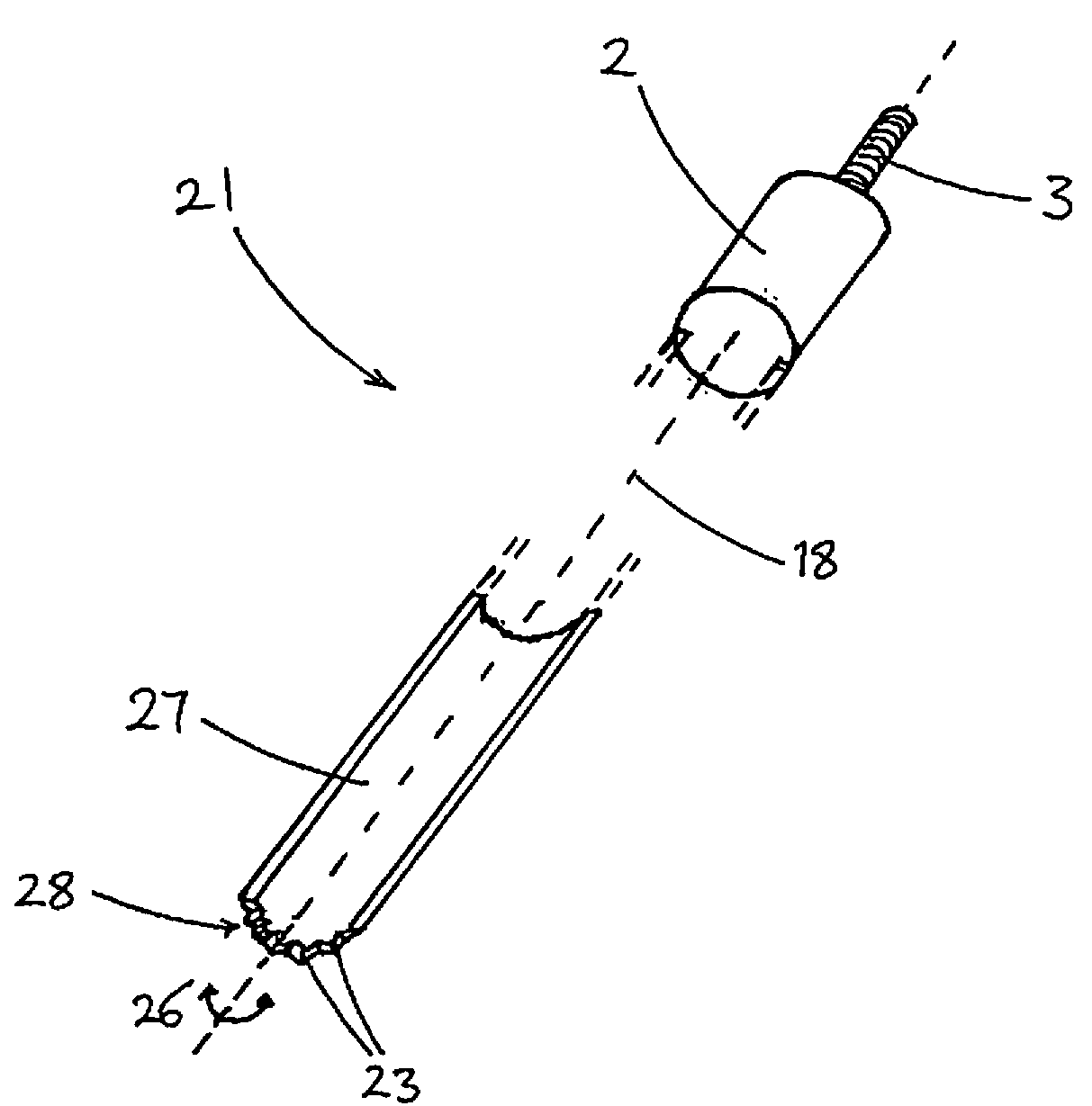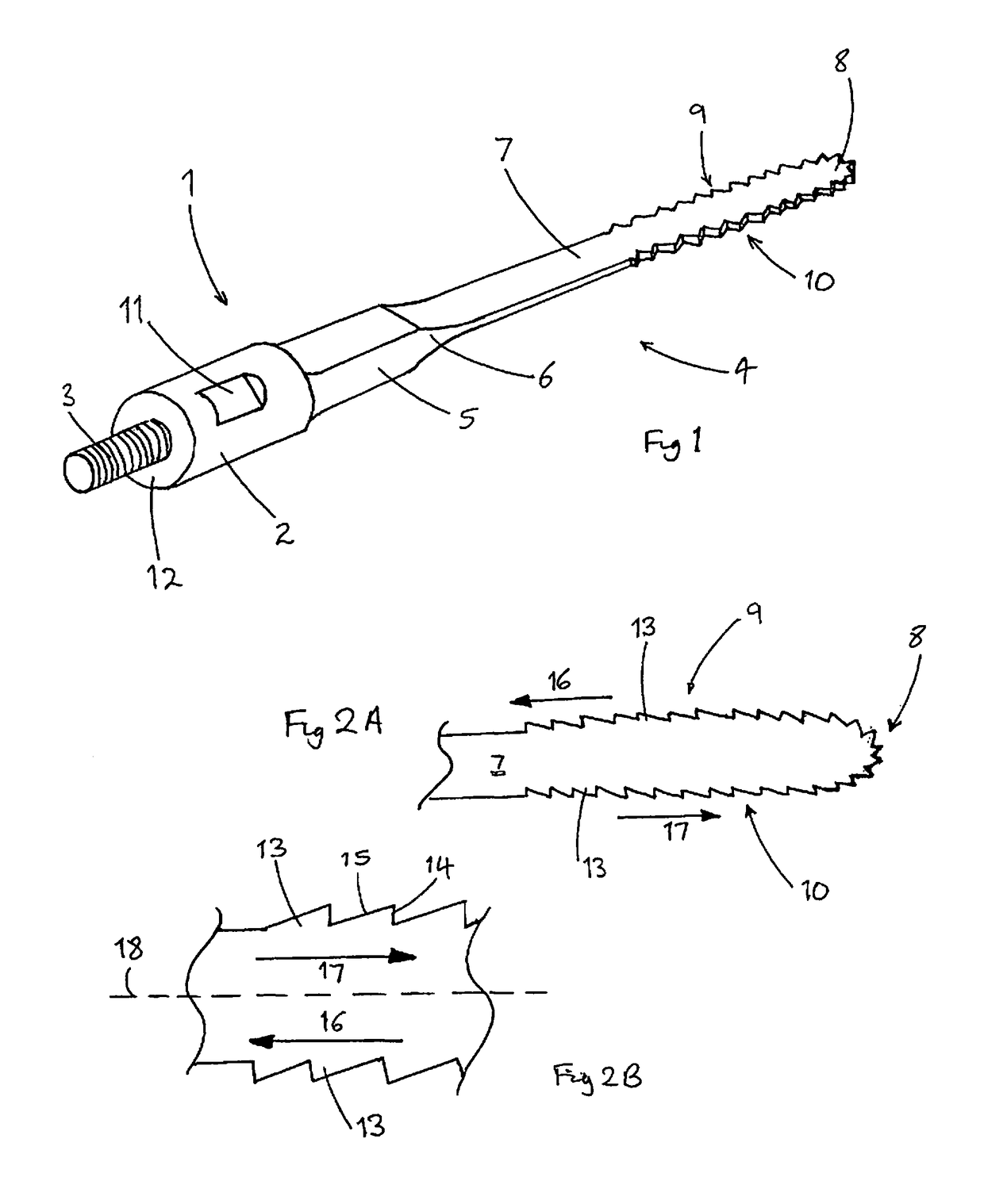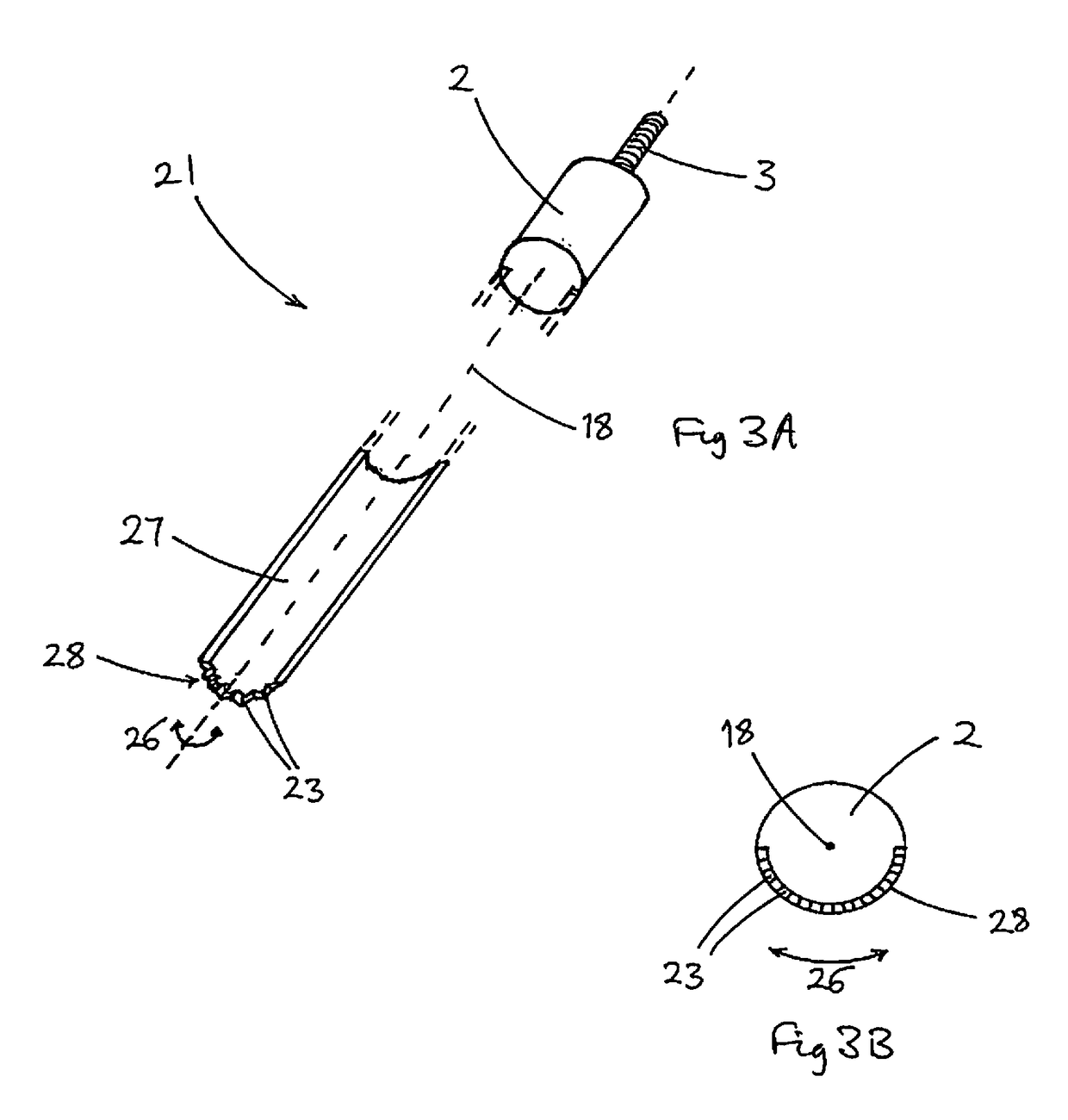Osteotome
a technology of osteotomy and bone, which is applied in the field of osteotomy, can solve the problems of compromising the directional accuracy of the technique, unable to achieve without mechanical means, and the cellous bone is not easily susceptible to cutting, so as to achieve rapid and convenient removal and accurate results.
- Summary
- Abstract
- Description
- Claims
- Application Information
AI Technical Summary
Benefits of technology
Problems solved by technology
Method used
Image
Examples
Embodiment Construction
[0056]Referring now to the Figures and to FIG. 1 in particular, a first osteotomy tool 1 comprises a cylindrical connecting body 2 provided at a proximal end with a threaded spigot 3, by which the tool 1 may detachably be connected to a generator of ultrasonic vibrations (not shown). An elongate blade portion 4 of the tool 1 extends from a distal end of the connecting body 2, and is aligned generally coaxially therewith.
[0057]The blade portion 4 comprises a proximal blade root 5 having a substantially rectangular cross-section and linked by a tapered portion 6 to a thin, flat elongate blade 7 with a generally rounded distal tip 8. A distal portion of the blade 7 has two oppositely-facing lateral cutting edges 9, 10. Each of the lateral cutting edges 9, 10 and the tip 8 is provided with a plurality of teeth 13, as shown in more detail in FIGS. 2A and 2B. A proximal portion of the blade 7 is toothless, although the relative lengths of the toothed and toothless portions may vary from t...
PUM
 Login to View More
Login to View More Abstract
Description
Claims
Application Information
 Login to View More
Login to View More - R&D Engineer
- R&D Manager
- IP Professional
- Industry Leading Data Capabilities
- Powerful AI technology
- Patent DNA Extraction
Browse by: Latest US Patents, China's latest patents, Technical Efficacy Thesaurus, Application Domain, Technology Topic, Popular Technical Reports.
© 2024 PatSnap. All rights reserved.Legal|Privacy policy|Modern Slavery Act Transparency Statement|Sitemap|About US| Contact US: help@patsnap.com










